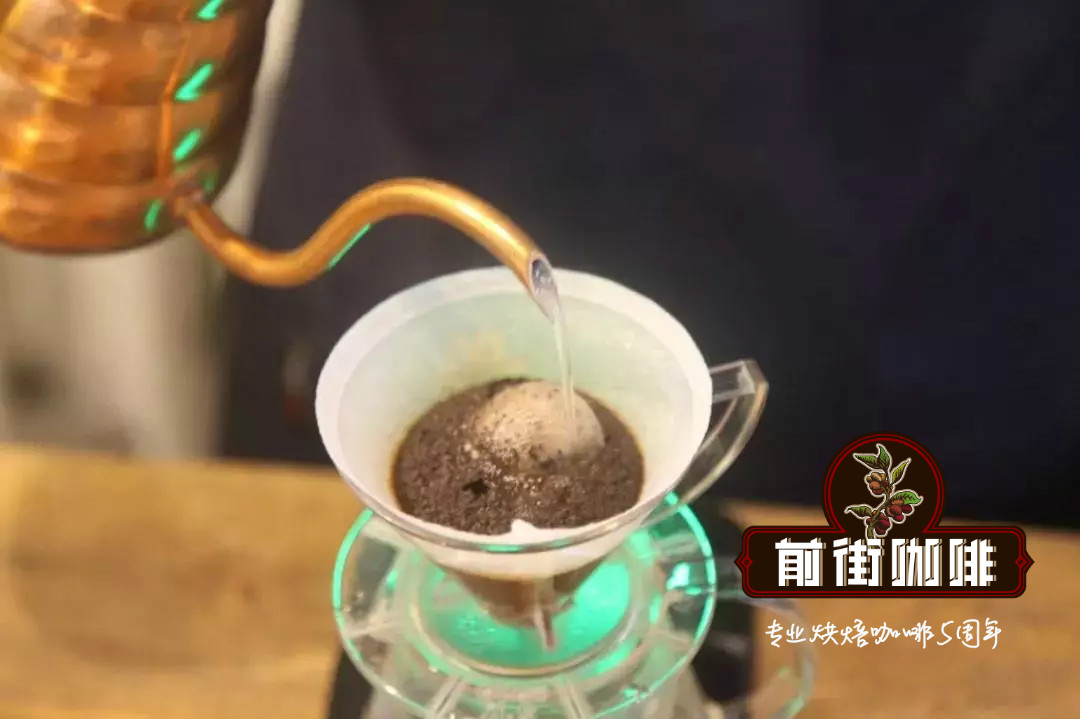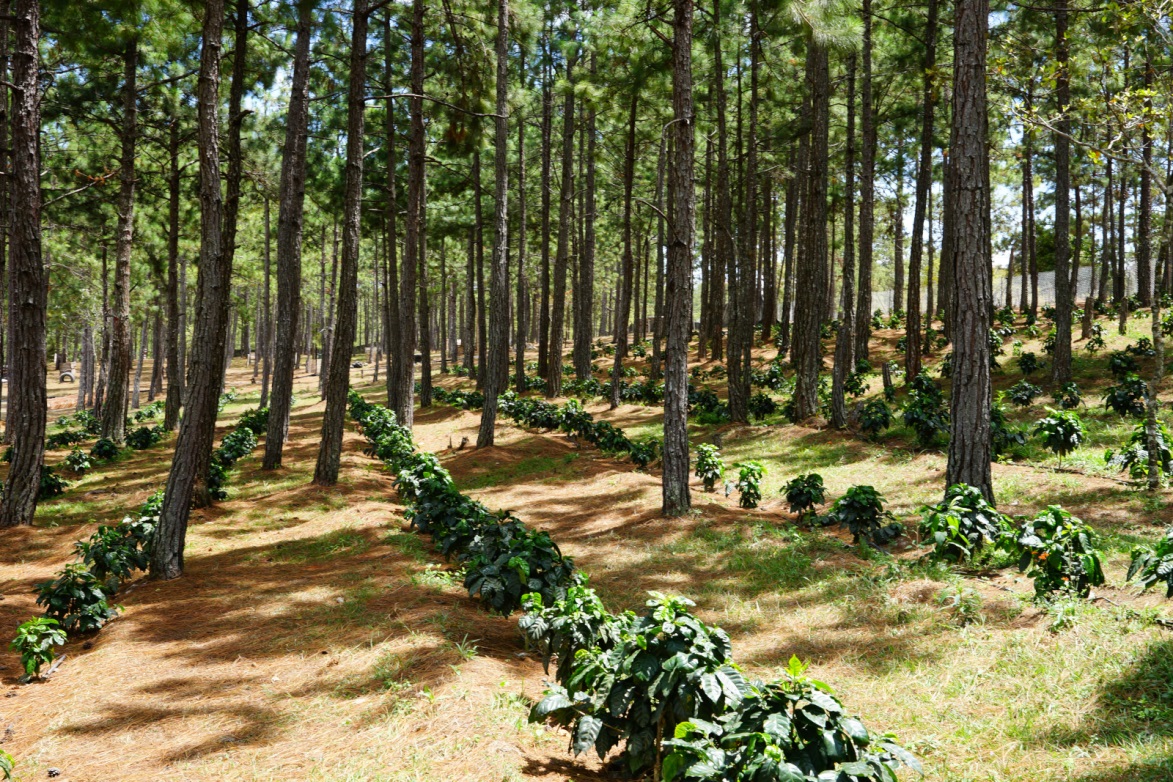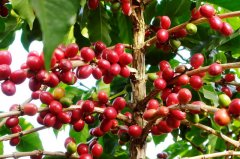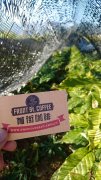Detailed introduction of micro-batch half-sun yellow bourbon in Santa Lucia Manor, South Minas, Brazil.

Professional barista communication, please pay attention to coffee workshop (Weixin Official Accounts cafe_style)

Coffee was first introduced to Brazil in the early 18th century. In 1727, the Brazilian government sent a handsome army officer to secretly bring coffee seeds back to Brazil from French Guiana on the grounds of mediating border disputes. It is said that the wife of the governor of French Guiana at that time was deeply fascinated by this officer, so she secretly sent coffee seeds to him in a bouquet at a farewell dinner. At present, Brazil has two million hectares of land used to grow coffee. Over 70% of the largest crop is Arabica, and these beans end up in the hands of large bakers in various countries, known as Santos (named after the export port of Santos, not the production area).
Brazil has also proved capable of producing fine coffee and small batches of coffee, local fine coffee is not necessarily only available to small-scale coffee farmers, Brazil's main coffee producing areas are Sul de Minas South, Matas de Minas Southeast Forest, Cerrado, Chapadas de Minas Minas North Central Cemetery, Mogiana Mogiana, Paraná Parana Province, Bahia Province. There are traditional varieties and varieties, such as Bourbon, Mondo Novo, Icatú Ikatu, Kaduai, Iapar, cultivated Kadai.
Name: Santa Lucia Estate, Brazil Yellow Bourbon
Region: Minas del Sur
Breed: Yellow Bourbon
Altitude: 1080-1200 m
Treatment method: half sun (peeling sun)
Flavor Description: Nutty. cream. caramel
Santa Lucia Manor Fazenda Santa Lucia is located in Minas del Sur. The Carmo de Minas region of Sul de Minas, owned by the Helcio Carneiro Pinto family, which has been growing coffee for 100 years, is now managed by its sons. Of the 740 hectares of land, 83 hectares are devoted to coffee and 9 hectares to yellow bourbon.(Yellow Bourbon), 18 ha Catuai, 18 ha Acaia and 25 ha Mundo Novo, annual production of 2800 bags (60kgs).
Santa Lucia Estate is a representative estate in the Carmo de Minas region and is currently expanding its coffee cultivation area, increasing its annual production to 5600 bags (60kgs). The family business is managed by The Sertão Group, and besides coffee, the land is used for grazing, corn and soybeans. This batch was handed over to the processing plant of COCARIVE(Carmo de Minas Cooperative), a smallholder cooperative in the region, which is keen to promote the cultivation and processing of high-quality coffee.
This microbatch of Fazenda Santa Lucia is peeled and sun-cured, coffee is naturally sun-cured, and flavor characteristics are described by experts as excellent cleanliness, nutty, dates, peanut chocolate, lemongrass, sweet cane, cocoa, nutty, clean and sweet.
What is microbatch? Front Street Coffee to explain this word to everyone ~
·Microbatches
This coffee comes from a specific area of a farm, sometimes from a small farm, or from a small plot of land shared by many producers.
Coffee is harvested and processed in small batches, and because of the increase in labor costs, which in turn increases the back-end price, microbatches of coffee are usually of excellent quality. Terra said O 'coffee's micro-batch coffee has a cup score of about 87-89 points and a yield of about 40 60-kilogram sacks.
This coffee from Santa Lucia Manor in Brazil is yellow bourbon, which Xiaobian likes quite a lot.
Yellow Bourbon, whose provenance can be traced back to Reunion Island, Madagascar, where the Bourbon species originated. French explorers first brought coffee here in the 18th century, so the variety has another nickname: French missionaries. In the 20th century, it was brought to Africa, and in turn to Brazil, and its derivatives are now found throughout Africa and America. A burgundy species grown in Brazil has a recessive gene that produces yellow fruit.
Brazilian coffee beans are soft, so the front street coffee suggested that when roasting Brazilian coffee can choose to use a small damper to speed up dehydration, and so on after the dehydration stage to open the stroke door and medium fire to let Maillard reaction, time is not too rapid, close to a burst tail out. When brewing, Qianjie Coffee is recommended to use moderate grinding, 86-88℃ water temperature, powder water ratio 1:13-1:14, with slow flow filter cup use yo ~
END
Important Notice :
前街咖啡 FrontStreet Coffee has moved to new addredd:
FrontStreet Coffee Address: 315,Donghua East Road,GuangZhou
Tel:020 38364473
- Prev

Carnett Manor Red Honey treatment of Mozart Flavor description of Carnett Manor growing only Huang Kaduai
Professional barista communication please follow coffee workshop (Wechat official account cafe_style) Costa Rica-Red Honey treatment (Carnett musicians Series Mozart) production area: Tara Ju Carnett Manor Variety: Huangkaduai Yellow Catuai altitude: 1980 m treatment method: red honey treatment Flavor description: berries, cherries, honey, floral fragrance ◎ Huangkaduai (Yellow Ca
- Next

The flavor of rose summer in Misuku hills of Malawi describes the quality of coffee in Malawi.
For the exchange of professional baristas, please pay attention to the coffee workshop (Wechat official account cafe_style) Product name: Malawi Misuku Hills Rose Summer producing area: Mzimba District, Msese Variety: Geisha altitude: 1520 m treatment method: traditional washing method Flavor description: with caramel, raisins, tomato, and basil flavor, obvious acidity the Republic of Malawi is located in Africa
Related
- Detailed explanation of Jadeite planting Land in Panamanian Jadeite Manor introduction to the grading system of Jadeite competitive bidding, Red bid, Green bid and Rose Summer
- Story of Coffee planting in Brenka region of Costa Rica Stonehenge Manor anaerobic heavy honey treatment of flavor mouth
- What's on the barrel of Blue Mountain Coffee beans?
- Can American coffee also pull flowers? How to use hot American style to pull out a good-looking pattern?
- Can you make a cold extract with coffee beans? What is the right proportion for cold-extracted coffee formula?
- Indonesian PWN Gold Mandrine Coffee Origin Features Flavor How to Chong? Mandolin coffee is American.
- A brief introduction to the flavor characteristics of Brazilian yellow bourbon coffee beans
- What is the effect of different water quality on the flavor of cold-extracted coffee? What kind of water is best for brewing coffee?
- Why do you think of Rose Summer whenever you mention Panamanian coffee?
- Introduction to the characteristics of authentic blue mountain coffee bean producing areas? What is the CIB Coffee Authority in Jamaica?

